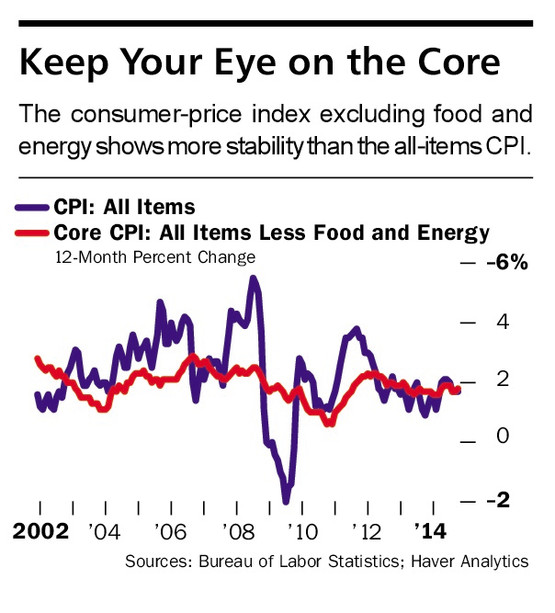 Gene Epstein of Barron’s turns his attention to long-running low inflation.
Gene Epstein of Barron’s turns his attention to long-running low inflation.
The era of low-flation continues. While the Federal Reserve used to be concerned that inflation may be running too high, it has more recently been worried that it may not be running high enough.
The October consumer-price index showed no change from September and was up just 1.7% from the same month a year earlier, the Bureau of Labor Statistics reported Thursday. The energy component of the CPI fell for the fourth consecutive month and was down 1.6% from the same month a year earlier, driven mainly by the plunging price of oil. As the chart on this page shows, over the past two years, the 12-month change in the all-items CPI has generally been running less than 2%, a marked slowdown from 2011.
As the chart also shows, the October CPI excluding food and energy—known as the “core” consumer price index—has also been running less than 2% from the same month a year earlier, and has shown no great change since 2011. That is the index Federal Reserve Chair Janet Yellen watches more closely.
Skeptics demand to know just how a price index labeled “core” can exclude food and energy, surely among the “corest” of commodities, along with clothing and shelter. Answer: because economists are afflicted with a tin ear. This index would more aptly be called the “trend” CPI, since, as the chart shows, its fluctuations are far more stable once the volatile components of food and energy are excluded.


